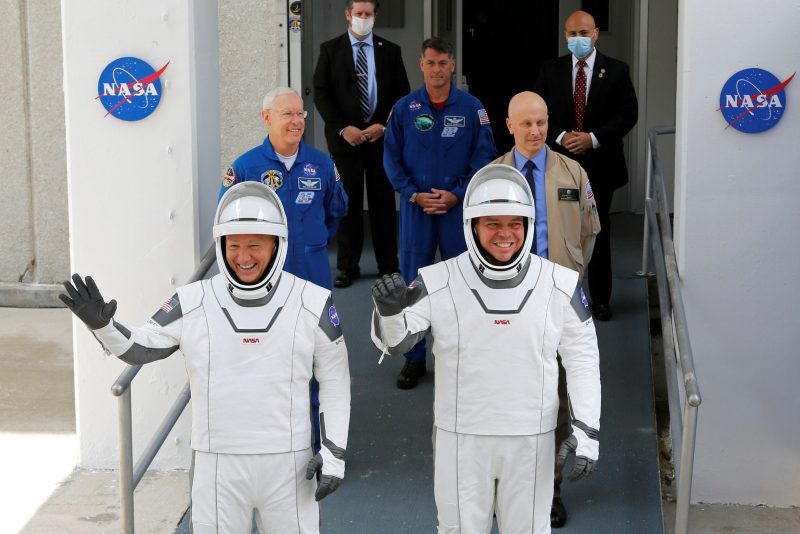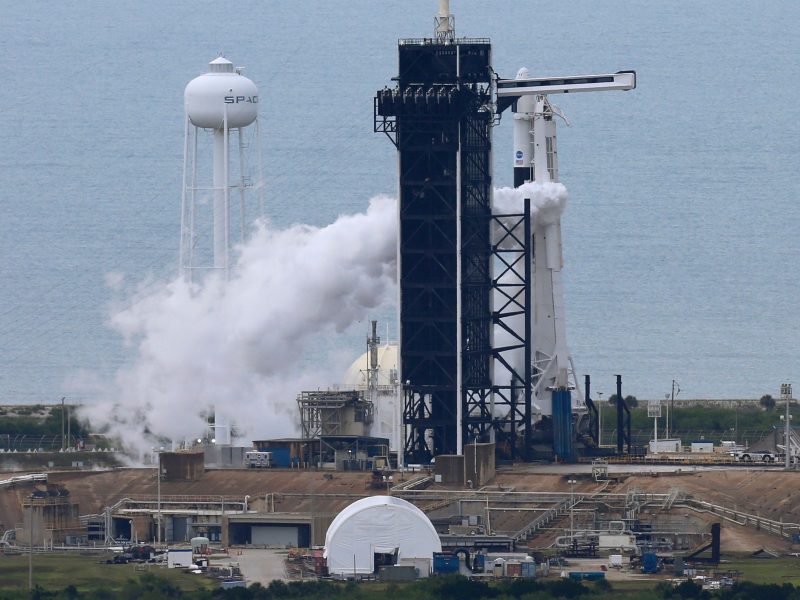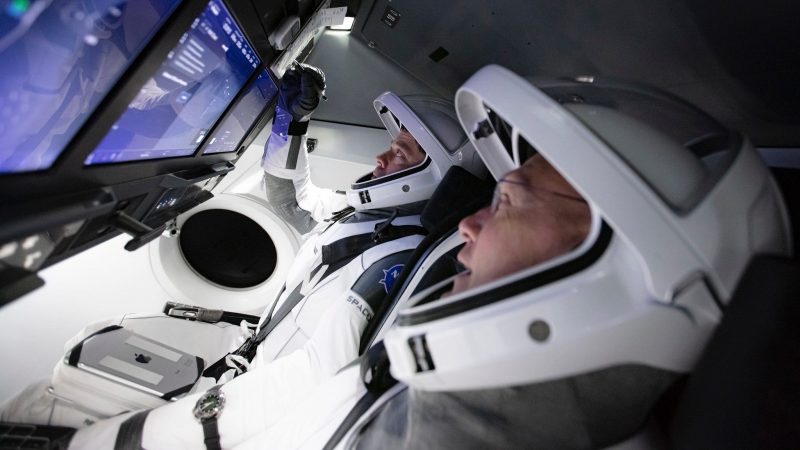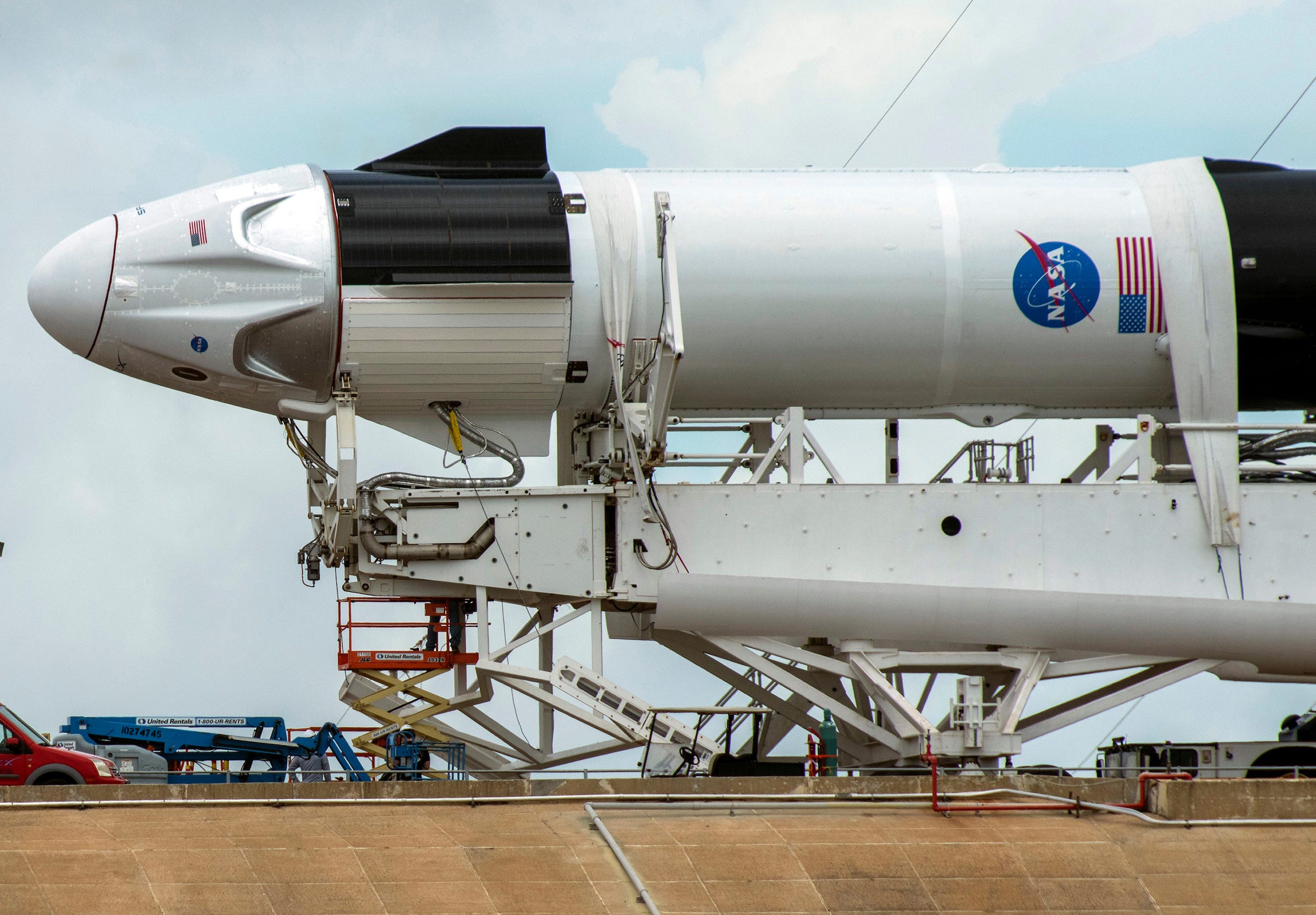- SpaceX’s historic first launch of NASA astronauts was scrubbed on Wednesday because of poor weather and rescheduled for Saturday.
- The weather might have cleared up in just 10 to 20 minutes, but the Falcon 9 rocket’s launch couldn’t wait another second.
- That’s because the rocket’s ultracold fuel warms up and vents out as it sits on the launch pad, causing the machine to have less room for error in sending people to orbit.
- When a Crew Dragon spaceship is on top with passengers inside, the rocket must lift off 35 minutes after fueling begins – and align perfectly with the International Space Station flying overhead.
- Visit Business Insider’s homepage for more stories.
SpaceX on Wednesday pressed to kick off an historic space mission from Cape Canaveral, Florida: the rocket company’s first with human passengers.
If successful, the high-stakes demonstration flight, called Demo-2, would resurrect human spaceflight in America and ignite a new era of commercial space exploration.
So the company, founded by Elon Musk in 2002, vertically raised a Falcon 9 rocket with a new Crew Dragon spaceship perched on top. Then two NASA astronauts, Bob Behnken and Doug Hurley, suited up, climbed inside the space capsule, and strapped into their seats.
The astronauts, NASA officials, President Donald Trump, Vice President Mike Pence, and more than 1 million people watching livestreams waited for the rocket’s booster to belch fire and smoke.
But at the last minute, thunderclouds rolled overhead and a powerful electric field threatened lightning in the skies. That made conditions unsafe for the rocket and the people atop it.
"Not quite going to make it for this," a weather officer said on NASA's live feed of the launch.

The commentator said that if SpaceX had an extra 10 minutes to wait, the mission may have been safe to leave Earth.
But that's not how the Falcon 9 rocket works, and certainly not with people on board who are trying to reach the football-field-size International Space Station (ISS).
In fact, liftoff can't wait even 1 second - what's called an "instantaneous" launch window - because of the rocket's design and the trajectory of the ISS over Earth.
So with 17 minutes before liftoff, SpaceX and NASA mission managers scrubbed the launch attempt and rescheduled the next for Saturday at 3:22 p.m. ET.
"Everything was looking our way except mother nature - the weather," SpaceX engineer John Insprucker said in the company's livestream of the first launch attempt.
Here's why the launch couldn't wait a single second longer.
A problem of ultracold fuel and a lab moving at 17,500 mph

Once SpaceX starts fueling a Falcon 9 rocket, it begins a process in which imprecise timing could mean life or death.
"Once you get into propellant loading at T-minus-35 minutes, you have to go as soon as you get to zero," Insprucker said. "We don't have the ability to stop the countdown, wait 5 minutes."
That's because liquid oxygen is pumped into the Falcon 9 at a very low temperature: 340 degrees Fahrenheit below zero. That keeps it liquid and densifies the fuel, a type of kerosene called RP-1, which allows SpaceX to cram more of it into the rocket and squeeze more performance out if the machine.
In fact, it's part of what gives the Falcon 9 its unprecedented thrust - the force behind its launch that allows it to push more than 50,000 pounds of cargo into orbit. The extra reserves also provide more wiggle room to reach orbit, and for SpaceX to land and recycle the rocket's booster - the biggest and most expensive part of the Falcon 9.
Once inside the rocket, however, the fuel begins to warm up, expand, and boil off. That fuel loss starts the launch clock ticking.
"That changes how much performance you get carrying into orbit, and we don't want to cut into those margins," Insprucker said.

Essentially, any additional time the rocket sits fully fueled on the launchpad increases the risk of dangerous failure - a risk that is not worth taking when there are humans on board.
So the Falcon 9 must launch at the exact scheduled second. If it misses that brief window with a satellite, Insprucker explained, the rocket can be detanked of its fuel and later reloaded with fresh fuel and cold liquid oxygen - a process that takes roughly an hour and a half.
But that is not an option for Demo-2, since the ISS flies over Earth's surface in a winding path, and at great speed.
"In the the case of the International Space Station, an hour and a half from now, it's nowhere where we need to be to get to orbit," Insprucker said. "In the end we can all look at Isaac Newton and Johannes Kepler for orbital dynamics telling us 'when do we launch?' that stuck us right in the middle of a period of bad weather."
That's why the mission must wait until Saturday to reattempt launch, at exactly 3:22 p.m. ET. From that launch window, the Crew Dragon's path will again align with the space station's orbit so that it can dock to the ISS with a maximum amount of fuel.
Behnken and Hurley are slated to join the ISS crew for up to 110 days. After then, Crew Dragon should carry them safely back to Earth, and their Demo-2 mission can be declared a success.
"We're going to stay hungry until Bob and Doug come home," Kathy Lueders, who manages the Commercial Crew Program for NASA, said in a briefing on Friday. "Our teams are scouring and thinking of every single risk that's out there, and we've worked our butt off to buy down the ones we know of, and we'll continue to look - and continue to buy them down - until we bring them home."
